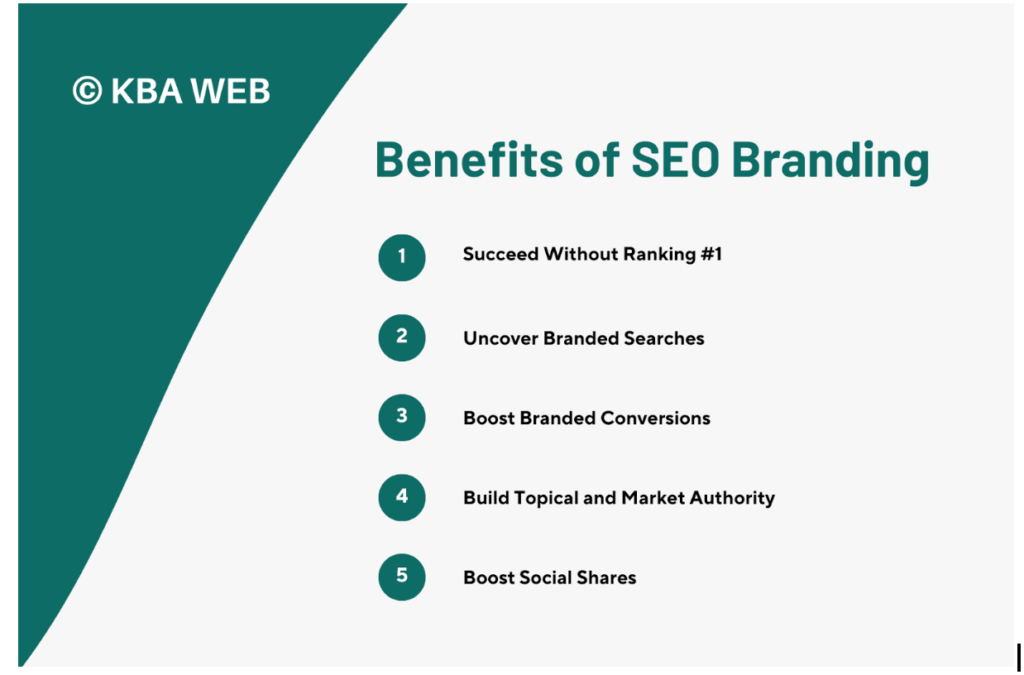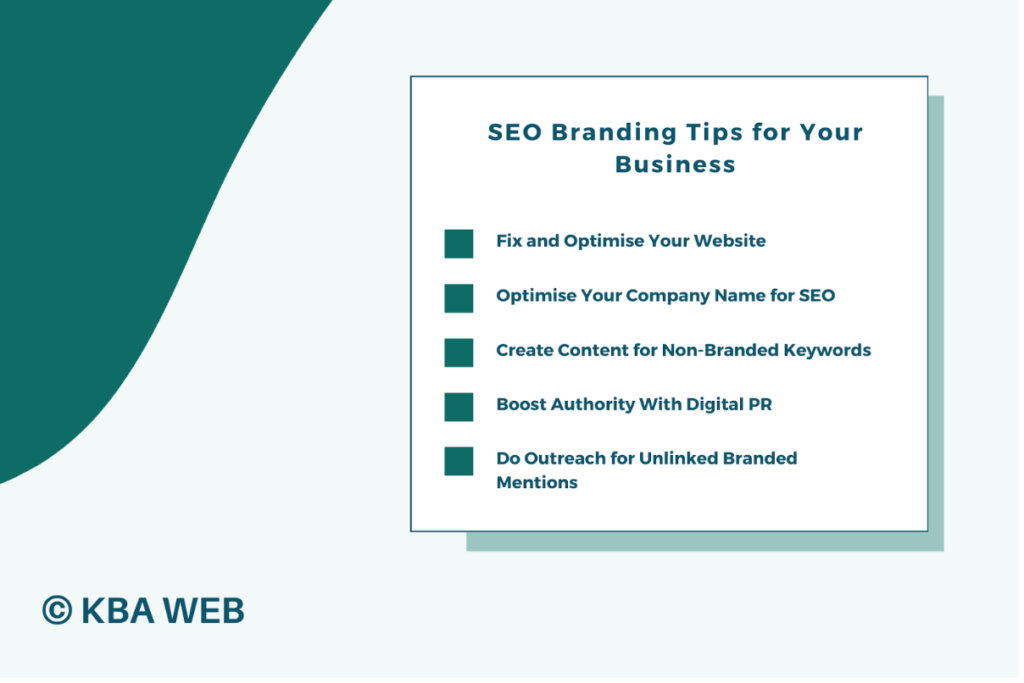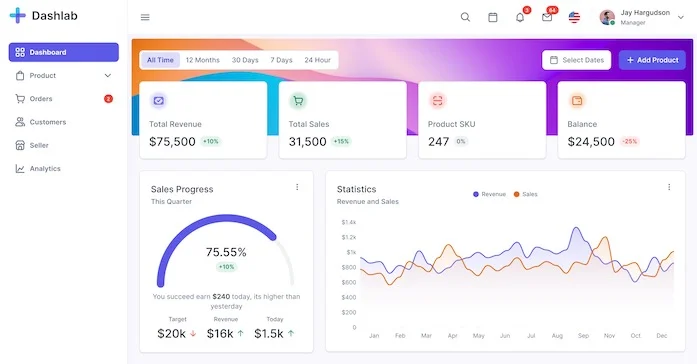You’ve probably heard the terms SEO and branding before, but have you considered how they work together? SEO branding is the powerful combination of creative flair and data-driven tactics that many businesses have successfully used to boost their online presence.
Read on to learn what SEO branding means, why it’s crucial for your business, and actionable tips to get you started.
What is SEO branding?
To understand better what SEO branding is, let’s do it the old way and break down the essential terms one by one.
What is branding?
Branding is the creative process of shaping your business’s personality. It’s about crafting a unique identity that resonates with customers and makes you memorable. Just like you’d choose your outfit and conversation style for a social event, branding involves intentional choices to make your business stand out online.
Key elements of branding include:
- Logo
- catchy slogans or taglines
- colour scheme
- typography
- content tone and language
- navigation and visual aesthetics
Consistent branding helps customers instantly recognize your products or services, just like a swoosh means Nike or a red can means Coca-Cola.
What is SEO?
SEO is a data-driven strategy to improve your website’s content and performance, helping you rank higher in search engine results for valuable keywords. For example, a health and fitness company selling protein powders wants to appear in searches for “vegan protein powder” or “best protein powder for muscle gain.”
SEO involves keyword research to find relevant search terms with high potential traffic. It also focuses on improving website user-friendliness, creating engaging content, and building backlinks to establish authority. Strong SEO can bring in highly qualified leads without relying on paid advertising. SEO consultants would perform what’s called keyword research, gathering data to see if your target keywords are worth the time and resources. They’d answer crucial questions like:
- Are potential customers actually searching for this keyword? (does it have a high search volume?)
- Is the keyword driving a good amount of traffic to other sites? (does it have a high traffic potential?)
- Is the competition tight for this keyword? (does it have a high ranking difficulty?)
And that’s just the start…
Understand that Google and other search engines want to show users the best and most helpful information.
So, beyond keywords, SEO strategists also focus on enhancing your site’s user-friendliness, creating useful and engaging content and acquiring backlinks to boost your authority.
With good SEO, you can appear at top of search results and bring in highly qualified traffic without spending on ads—very cost-effective and sustainable.

SEO Branding
SEO Branding: The Sweet Spot
SEO and branding might seem like opposites – one relies on data, the other on creativity. However, SEO branding finds the sweet spot where they work together. It’s about making your brand more searchable while staying true to your unique identity.
Two Common Mistakes to Avoid:
- Overbranding: Using too much brand-centric language or jargon can confuse customers and search engines. SEO helps by optimizing product descriptions with relevant keywords.
- Over-optimization: Focusing too heavily on keywords can make your content dull and unengaging. Strong branding uses storytelling and engaging copy to guide customers through the buying process, benefiting SEO by increasing dwell time.
The key is to strike a balance between data-driven optimization and creative branding.
Why is an SEO branding strategy important?

Businesses can benefit a lot from an SEO branding strategy in the following ways:
Succeed Without Ranking #1
We often go for brands we trust, whether it’s clothes or food on grocery shelves. The same goes when we search for a product or service on Google – we scroll down until we find a familiar brand, unbothered if it’s not among the top few results.
Your brand positioning does most of the heavy lifting here. If you’ve done a good job with that, more people will choose your brand, and Google will take notice. And as this goes on, Google will probably bump you up in the rankings, moving your page closer to the top over time.
Uncover Branded Searches
Social media and other external factors can influence your customers’ search habits over time, and that includes keywords they use with your brand name.
For instance, let’s say your company, ‘EcoClean’, sells eco-friendly cleaning products. Initially, you may have targeted keywords like ‘green cleaning supplies’ and ‘eco-friendly home cleaners’. However, your ongoing SEO efforts may tell you that customers often search for terms like ‘EcoClean home sanitisers’ and ‘EcoClean organic disinfectant.’
With this insight, you can then refine your SEO branding strategy and prioritise these more lucrative keywords for better business outcomes.
Boost Branded Conversions
When customers perform a branded search for your specific brand, it shows they’re not just casually browsing. They either already know or at least have some idea about what your brand offers, including the features and benefits of your products or services.
By uncovering those branded searches, you have within reach those highly qualified leads – those in the consideration or decision phase of the buyer’s journey. Because they’re so interested and informed about your products or services, there’s a much better chance they’ll actually make a purchase.
Build Topical and Market Authority
Topical authority means being the go-to source in a specific subject, making your content trusted and valuable within your niche.
Market authority, on the other hand, involves becoming a credible leader in your industry, making your brand a reliable figure in the overall market.
To achieve both forms of authority, SEO for branding is key. This primarily involves improving your content by looking into what competitor brands are doing right and where there are content gaps.
Using SEO tools, you can see and examine topics they cover and how they structure their information, helping you identify any gaps in their strategy that your brand can fill with useful and relevant information.
But beyond brand competitor research, SEO research includes exploring the broader industry and your customers’ queries. This helps you discover unique content ideas that competitors have overlooked, giving you the opportunity to capitalise on them.
Boost Social Shares
When you see your content being shared on platforms like Facebook or Twitter, those are social shares in action. SEO branding can help with this by creating valuable and shareable content and optimising your website to improve user experience.
Although social signals might not directly affect how Google ranks your site, they increase your brand’s online visibility. Every time someone shares your content, there is a better chance of potential customers stumbling upon your brand and then using a branded search.
SEO Branding Tips for Your Business

Fix and Optimise Your Website
Your website is your online storefront, so make sure it gives a positive first impression.
Start with the basics. See to it that your branding flows consistently, from colours and typography to all media elements. Keep this consistent look across all pages.
On the technical side, ensure your site loads quickly and has a user-friendly interface. Running a site audit will further help you uncover issues that are not apparent, like broken links and 404 errors.
After sorting those out, smoothly incorporate your target keywords into your website copy, making sure the copy still remains effective and engaging for your customers.
If you find this balancing act challenging, consider hiring an SEO copywriting service that fully understands both SEO and branding.
Optimise Your Company Name for SEO
Some companies choose names with high-value keywords that people might search for, like a local bakery calling itself ‘Seattle Artisan Breads.’
So, if you’ve yet to come up with a name for your business, consider using this SEO strategy. It’s been shown to quickly improve your chances of ranking well and competing with bigger companies in your industry.
However, while using keywords can help your business appear in online searches, a name that’s too focused on keywords won’t be as unique as one that’s original and personal. So, again, finding the right balance is key.
Create Content for Non-Branded Keywords
While it may seem counterintuitive, putting effort into content creation for non-branded keywords can eventually help with your SEO branding.
This informative content serves to nurture and transform curious visitors into loyal customers, moving them toward the bottom of the sales funnel.
As you do this, make sure your content is high quality and follows SEO best practices. Use the right keywords, make it easy to read and cover everything your readers might want to know. It’s a great way to build a deeper connection with your audience and encourage return visits.
Boost Authority With Digital PR
In digital PR, you reach out to media outlets, influencers, bloggers and online platforms to gain coverage for your brand or business. You might write guest posts, participate in interviews or do collaborations.
When you successfully pitch your story or content to these channels, you could obtain a backlink to your website or, at the very least, have your brand mentioned. It’s a great way to build your brand’s reputation and credibility in the eyes of both potential clients and Google.
Do Outreach for Unlinked Branded Mentions
Unlinked branded mentions are instances where your brand is mentioned online but lacks a hyperlink back to your website.
The strategy here is brand mention link building, which focuses specifically on finding and turning these non-linked references into valuable backlinks.
Unlike other backlinking strategies, you have a higher chance of securing these types of backlinks since the source already recognises the value of your brand.
However, doing this manually can be a bit of a headache, as there could be thousands of pages to evaluate.
Expertise in using SEO tools, such as Ahrefs, is necessary to be able to pick out branded mentions from qualified and reputable websites. Apart from that, make sure the mention is positive and, if possible, recent, to showcase your brand’s ongoing relevance.
Wrapping up on SEO for Branding
In summary, SEO and branding have their unique benefits, but there’s a sweet spot where they can work together seamlessly.
Of course, SEO branding isn’t without its conflicts, but with careful consideration, it becomes a powerful strategy that attracts potential customers and pleases Google and other search engines.
To improve your online visibility, work with an SEO agency that appreciates the importance of your company’s branding. With their assistance, you can optimise your site for search engines while maintaining your brand’s identity and appeal.






